Prairie Sentinels – Coderre Saskatchewan
It’s May 2014. Connie and myself are on whirlwind back road tour of southwest Saskatchewan. Our goal this trip was to capture all things old and abandoned. We visited ghost towns, forgotten farms, photographed old bridges, explored old rail lines. And then there were the grain elevators. There are still a fair number of them left in the province and we wanted to see as many as we could in the time we had, a short five days. Among those “prairie sentinels” we explored and documented is the one that is subject of this report, which was found in the tiny community of Coderre.
The building was constructed in 1924 for the Saskatchewan Co-operative Elevator Company. That organization, two years later, was folded into the Saskatchewan Wheat Pool (aka SWP). Both were farmer owned collectives. At one time, the SWP was the largest grain handler in Canada and nearly every town that had rail service in Saskatchewan had an elevator belonging to that company. This was their “A” facility – at the peak they owned other elevators in town, each refereed to alphabetically.
The SWP ceased to be after 2007. That year it merged with a rival, (Agricore United) to become the firm Viterra. It was no longer farmer owned after this point. As of 2013 Viterra has been split up and has been acquired by number of firms. Many grain handling facilities were picked up by Richardson International, who also owns Pioneer Grain.
According to some sources, in the mid-1950s this elevator was rebuilt. The work done apparently was so substantial that some would argue it’s a completely new structure. I can’t say for certain what exactly happened at the time, so until I know more, it’s best I don’t comment. We invite input from our readers if they should know.
The Pool, as it was often called, closed this facility in 1990. The nature of the business was changing: the small prairie town elevator network and the rail system that carried the grain to market were by the 1990s, looked on as inefficient. Taking their place were large inland terminals. Instead of loading a few railway cars at a time, these could fill dozens and dozens in one pass or sometimes even an entire train’s worth. Most of these newer grain terminals were built in the mid to late 1990s and early 2000s, concurrent with the closing of most small elevators and grain handling branches, and were located alongside busy mainlines often far from the grain producer. In the old way, the trains came to the farmer. Now it’s been reversed and they are often required to travel long distances to get their output to market.
At some point after closing the building was acquired by a local group and is now used as a seed cleaning plant. It’s not known if the elevator ever had an annex, a side structure used to increase capacity. If it did, I have found no evidence of it. I guess the volume of business at this location was never that great.
In addition to this building, there used to be three other elevators in town, all built in 1926.
The first belonged to Lake of the Woods Milling Company. The Saskatchewan Wheat Pool acquired the elevator in the late 1950s and with that it became their “B” facility. It was used up until 1984. Another elevator here once belonged to Alberta Pacific Grain. That firm was acquired by Federal Grain in the 1940s. Federal’s Saskatchewan operations were then taken over by the Pool in the early 1970s. This became the SWP “C” facility until it too closed in 1984.
The last elevator belonged to a series of owners (Searle Grain and Federal Grain are two names you may recognize) before becoming a Saskatchewan Wheat Pool facility in the early 1970s (via its purchase of Federal). This became the SWP’s “D” elevator which was closed in 1980.
Via mergers and acquisitions (a common occurrence in the industry) the SWP ended up owning every single elevator in Coderre. Interesting!
You’ll notice in one picture a left facing arrow on the railway-side wall of the elevator just above the loading spout. This told the train crew to spot the cars to be loaded to the right of the structure. The siding was built on a slight grade and this allowed each car to loaded and then rolled aside when full. The arrow points downgrade.
Few grain elevators today rely on gravity to move cars. Most use a cable and winch system or some, a company owned locomotive or specialized rail car mover.
The Canadian Pacific Railway built a branch to Coderre in the mid-1920s. The line came in from a point near Swift Current and headed east before arriving here. For a few years the community was temporarily the end of track. Around 1930, the branch was extended further east, to a point just south of Moose Jaw. This line was the CPR’s Shamrock Subdivision. It was never a terribly busy section of track, given the small population in the area (and resultant small grain output) and and even at the peak, trains only operated a few times a week. Passenger service was once provided by a coach tacked onto the end of a freight. The line closed in the late 1980s and today there is very little remains to tell us it ever existed.
Coderre as a village dates from in the mid-1920s. It obtained this status with the coming of the railway, although people had lived in the area prior to that. Most early settlers were French speaking. The town was named after one residence, who ran the local post office.
At one time there were several thousand traditional wood-cribbed grain elevators in the province of Saskatchewan. Now there are perhaps five hundred left. Most were lost due to changes in the grain industry that took place in the 1990s – recall: small elevators were replaced by larger structures, there was a mass abandoned of money losing grain handling branch lines and there were consolidations within the industry (a simple explanation to a much bigger and complex issue).
Of those elevators that have survived, many are used for grain storage by locals farmers. Some are now seed cleaning plants, like this one. A few are still used to load rail cars. Some are museums or historic sites and some are abandoned. All are interesting.
To see more grain elevators, follow these links…
Prairie Sentinels – Cadillac Saskatchewan.
Prairie Sentinels – Leader Saskatchewan.
Prairie Sentinels – Three Hills Alberta.
If you wish more information on what you’ve seen here, by all means contact us!
Date of adventure: May, 2014.
Location: Coderre, SK.
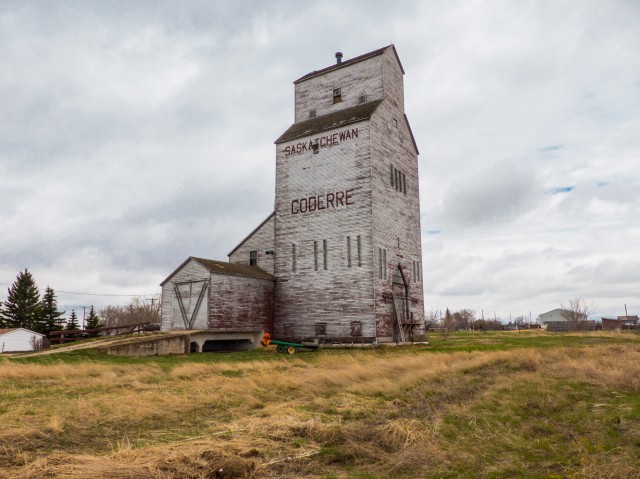
The only grain elevator left in the tiny hamlet of Coderre Saskatchewan.
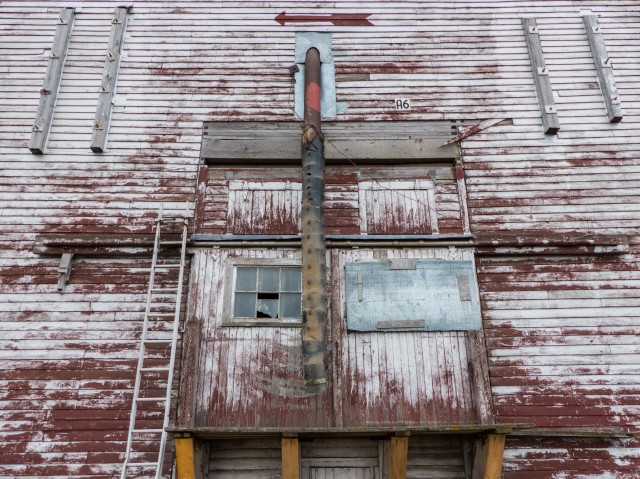
Read the report to find out what that arrow means.
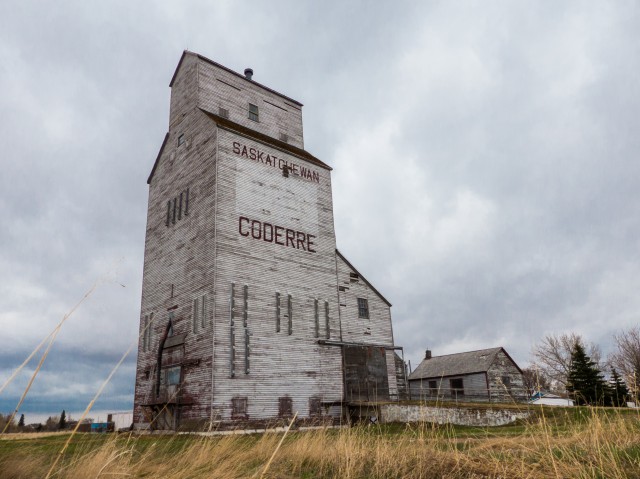
This building dates from 1924.
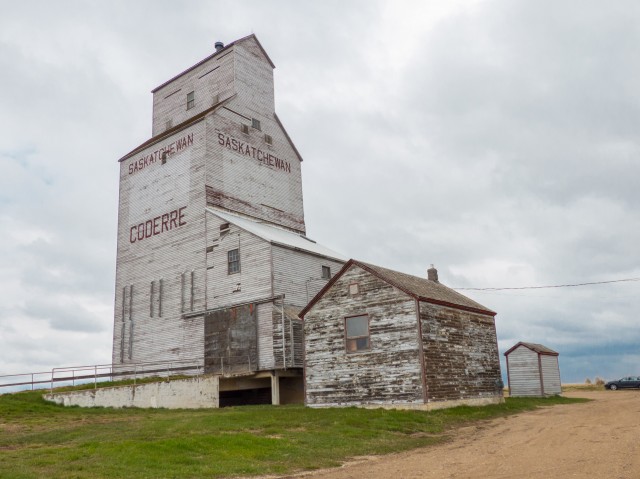
It is a former Saskatchewan Wheat Pool facility, now used as a seed cleaning plant.
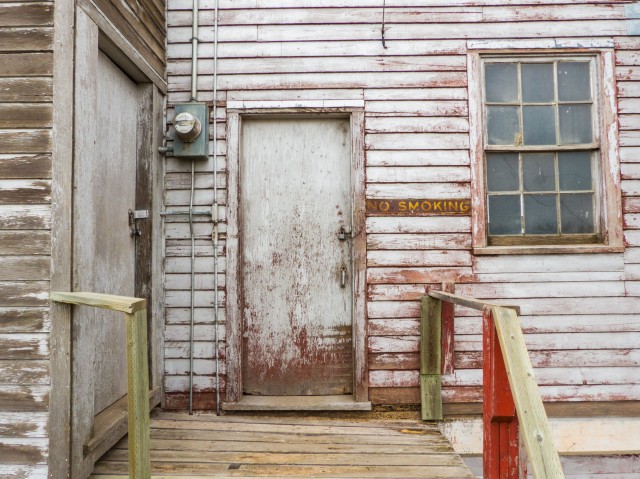
Come on in!
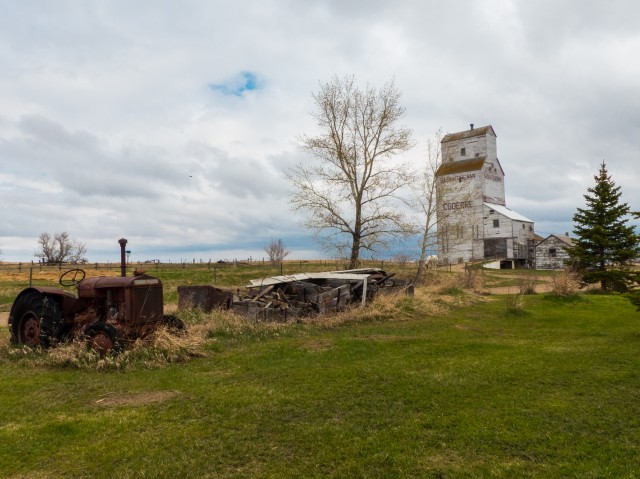
An old McCormick-Deering tractor can be seen in front.

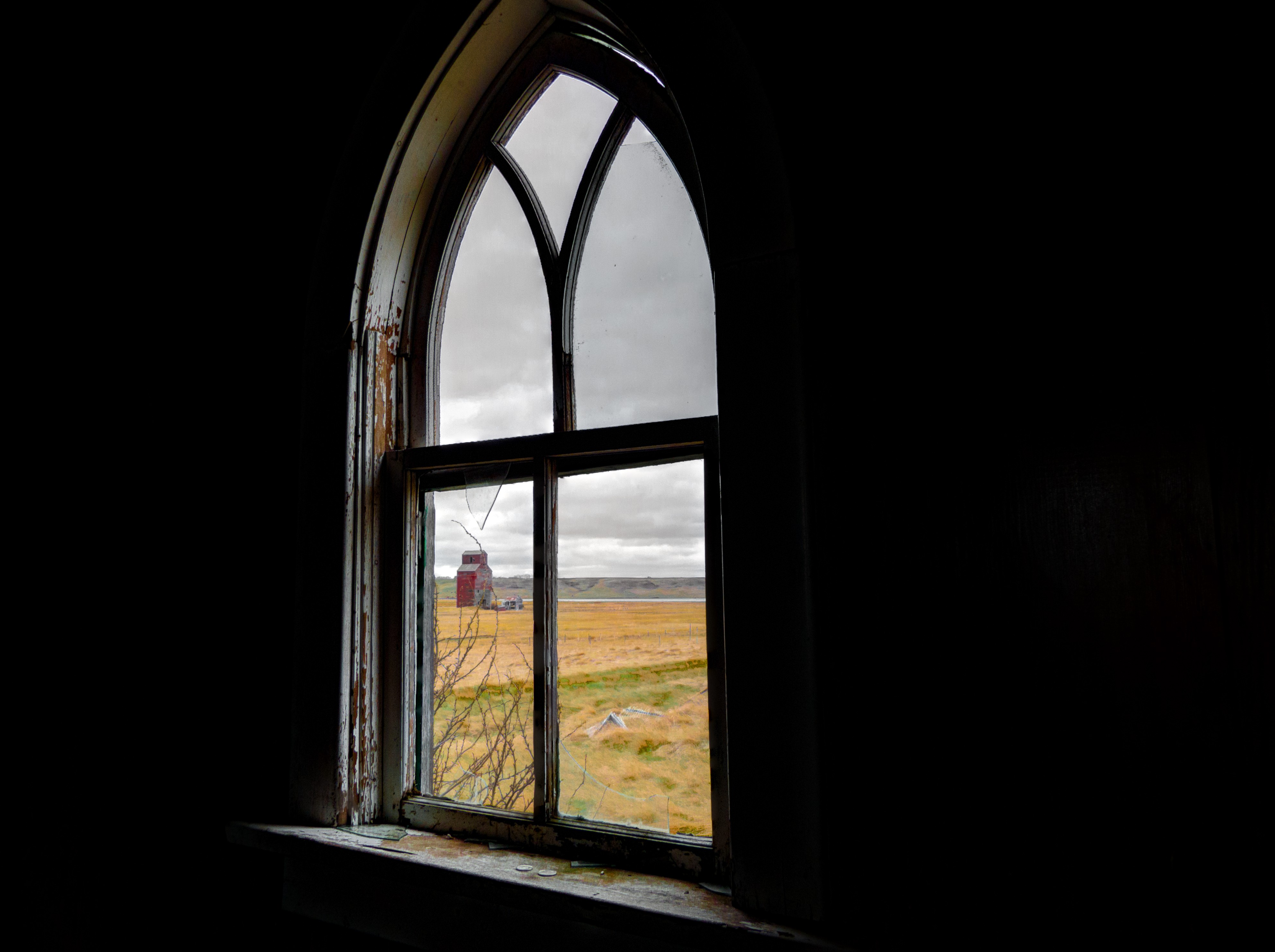

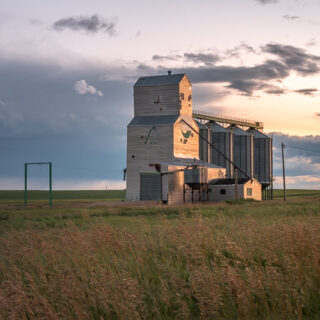
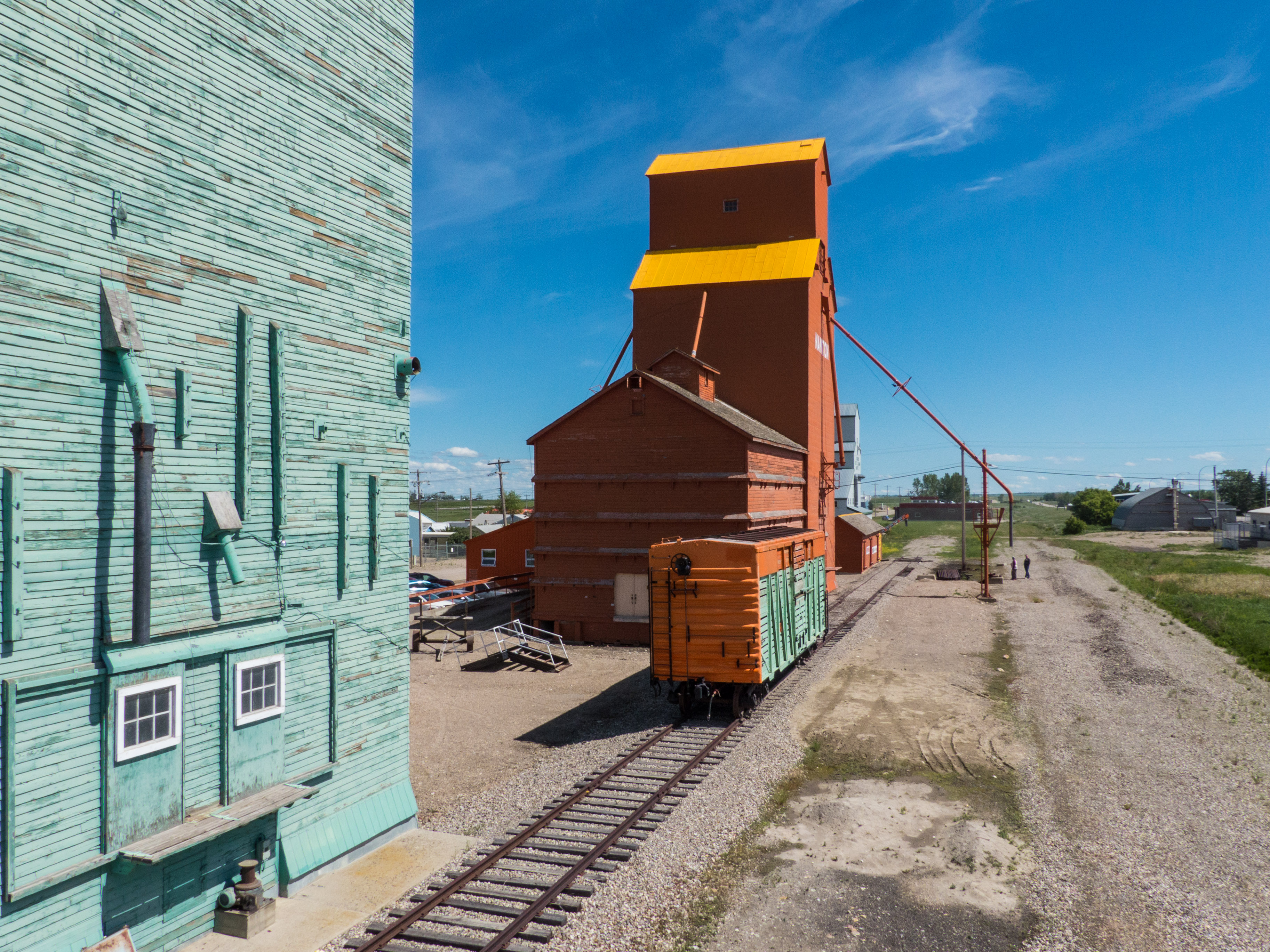
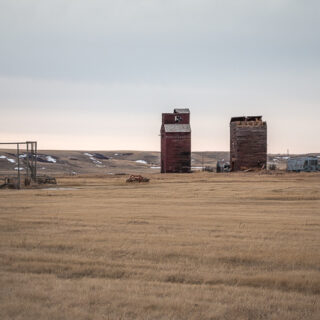
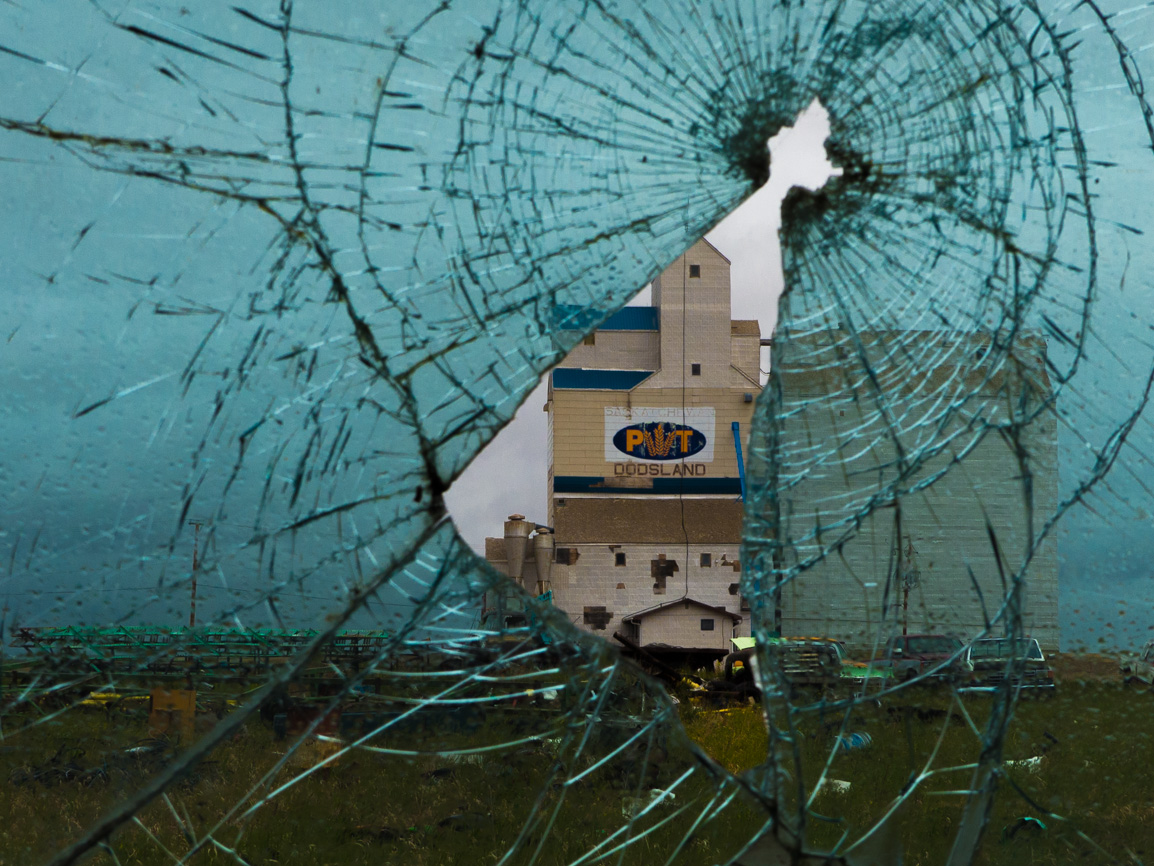
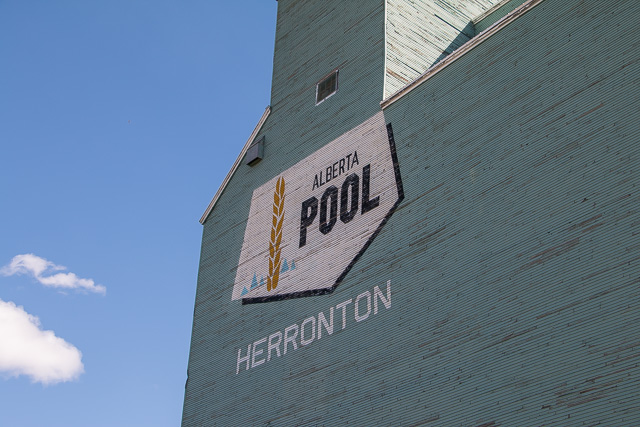
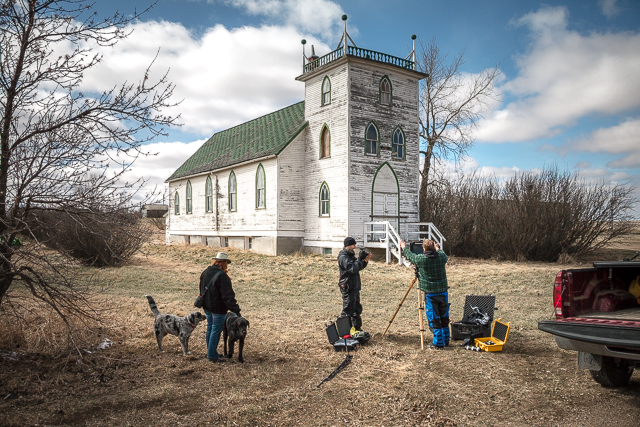
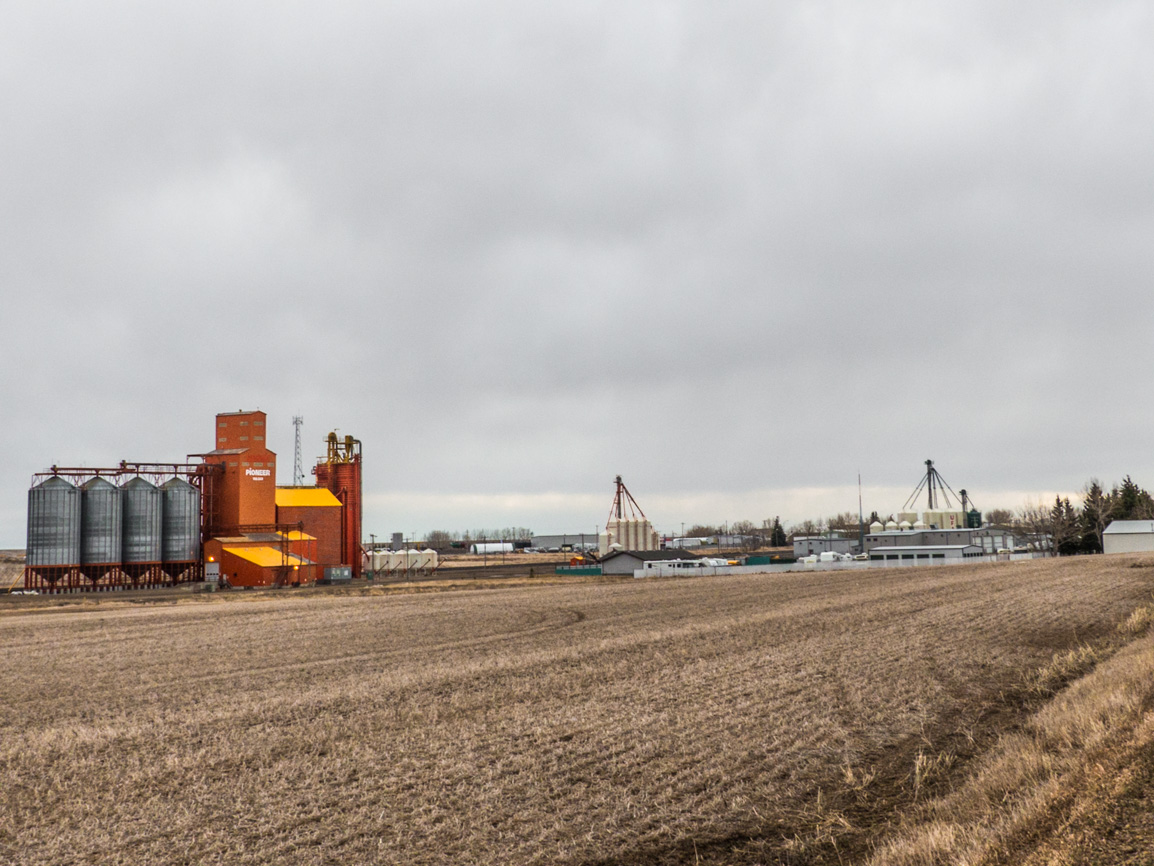
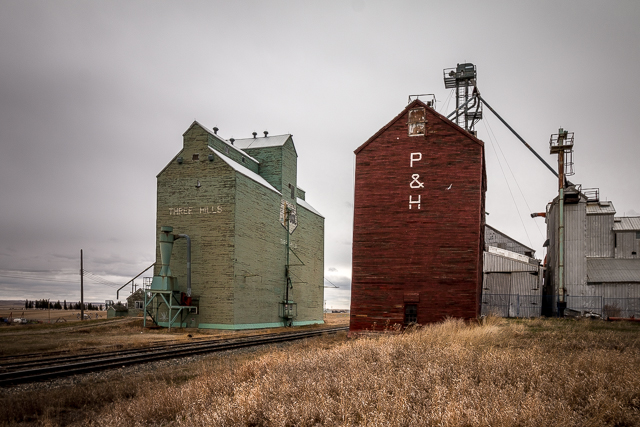
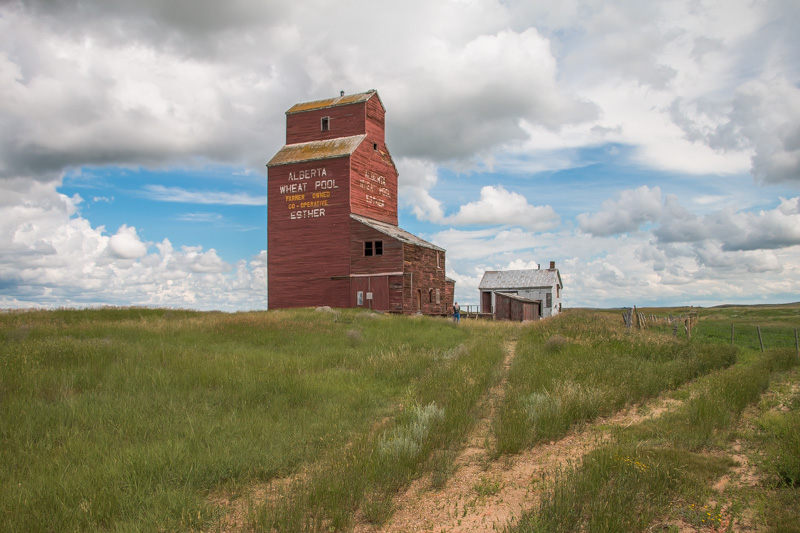
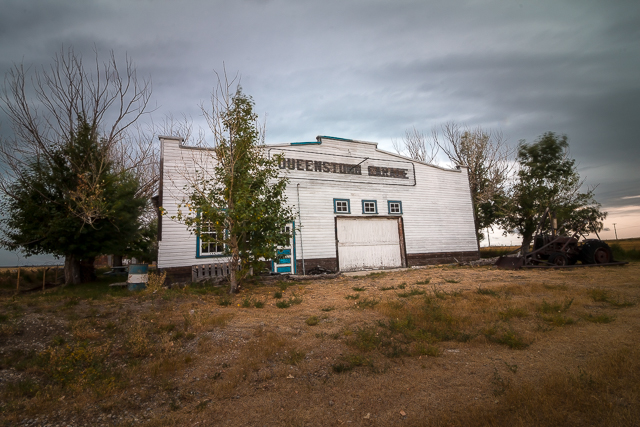
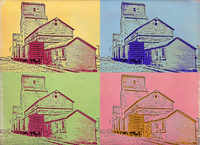






I loved your mostly accurate writeup on the elevators in my home town. I am the granddaughter of EB Coderre, the resident who ran the first post office and thus had the village named after him. As far as I recall, the Pool elevator of which you speak as being rebuilt in the mid ’50s, actually wasn’t rebuilt but did undergo extensive repairs in the early 1960s. Thank you again for the memories.
You’re a sweetie! Glad we almost got the history right. I looked through pool records and they note some extensive work being done in the 50s. Some pages are missing so it’s a bit unclear but it seems they replaced out the machinery and the like and did some major structural changes. Not a minor fix-up but something more. Still, these things were always being worked on at one time or another. I’m with a group that owns ones and it’s maintenance intensive! Thanks for commenting!
Hi there Claudia!
My name is Sarah Barrett and I work for La Société Historique de la Saskatchewan. Right now we are working on a project that showcases different French ghost towns around the province and Coderre is one we are interested in! We are looking for people who might have mermories of the towns and are willing to share their stories with us. I read your comment and it seems as though you have some family roots in Coderre. I would love to have a chance to talk with you and perhaps you might be able to help us iwth our project ! Please feel free to email me at : XXXXX.XXXXXXX.XXX@XXXXX.XXX
Thanks so much!
See our previous comment to you on this. Claudia, if you see this, contact us and we’ll pass your message along to Sarah.
Claudia’s cousin Dean here, from “the States”, but born in Moose Jaw and used to visit Coderre every summer as a kid: I used to love playing around the elevators and railroad. I befriended one of the elevator operators, who let me watch how he started the big flywheel diesel engine that ran the machinery. I have a big lock-washer on my office shelf from the rails that used to run through Coderre, that I found along the former right-of-way years ago. I remember my Mom and I rode the passenger car on the train from Moose Jaw into Coderre one year, when I was 10 or so. I remember seeing my Uncle Eddie Coderre and his kids walking along the tracks as we pulled into the Village, and I pounded on the window to try to get their attention, but those windows were too thick! I was sad to see the old station gone, and I wonder where its “CODERRE” sign ended up.
Thanks for sharing these fantastic memories!
Coderre is my hometown. My dad was an agent in the elevator Don’t know if the one in the picture was specifically the elevator he was in. I beleive there were 3 of them. The one he worked in was Searle, then changed to Federal Grain then Sask wheat Pool. I used to spend a lot of time eith him there. Great memories. Great write up as the Courvsl Church is.. Been there many times also as we lived there a while and my grandparents lived there.
Wow, just wow! Thanks for sharing these memories.
Hi there Linda!
My name is Sarah Barrett and I work for La Société Historique de la Saskatchewan. Right now we are working on a project that showcases different French ghost towns around the province and Coderre is one we are interested in! We are looking for people who might have mermories of the towns and are willing to share their stories with us. I read your comment and it seems as though you have some amazing memories! I would love to have a chance to talk with you! If you are at all interested ( even just a little bit!! ), feel free to email me at : XXXXX.XXXXXXX.XXX@XXXXX.XXX
Thanks so much!
Sarah, have obscured your email for privacy reasons. If the person responds, and if they’ve “subscribed” to comments they’ll get a notice of your message, they can contact us and we’ll get you together. Best of luck with your project.
The McCormick Deering is a model WD40, one of the very first diesel tractors made. They were produced in the late 1930s.
Wow, that is an early one!
Gorgeous! Gorgeous! Gorgeous!
Thank you! Thank you! Thank you!
Very nice shots Chris!!
Awe shucks!